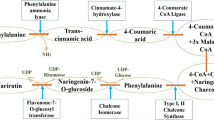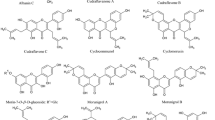Abstract
Edible berry anthocyanins possess a broad spectrum of therapeutic and anti-carcinogenic properties. Berries are rich in anthocyanins, compounds that provide pigmentation to fruits and serve as natural antioxidants. Anthocyanins repair and protect genomic DNA integrity. Earlier studies have shown that berry anthocyanins are beneficial in reducing age-associated oxidative stress, as well as in improving neuronal and cognitive brain function. Six berry extracts (wild blueberry, bilberry, cranberry, elderberry, raspberry seeds, and strawberry) were studied for antioxidant efficacy, cytotoxic potential, cellular uptake, and anti-angiogenic (the ability to reduce unwanted growth of blood vessels, which can lead to varicose veins and tumor formation) properties. We evaluated various combinations of edible berry extracts and developed a synergistic formula, OptiBerry IH141, which exhibited high ORAC (Oxygen-Radical Absorbing Capacity) value, low cytotoxicity, and superior anti-angiogenic properties compared to the other combinations tested. Anti-angiogenic approaches to treat cancer represent a priority area in vascular tumor biology. OptiBerry significantly inhibited both H2O2- and TNF-α-induced VEGF (Vascular Endothelial Growth Factor) expression by human keratinocytes. VEGF is a key regulator of tumor angiogenesis. Matrigel assay using human microvascular endothelial cells showed that OptiBerry impaired angiogenesis. In anin vivo model of angiogenesis, OptiBerry significantly inhibited basal MCP-1 and inducible NF-κB transcriptions. Endothelioma cells pretreated with OptiBerry showed a diminished ability to form hemangioma and markedly decreased tumor growth by more than 50%. In essence, these studies highlight the novel anti-angiogenic, antioxidant, and anti-carcinogenic potential of a novel anthocyanin-rich berry extract formula, OptiBerry.
Similar content being viewed by others
REFERENCES
Francis, E. L. (1989)Crit. Rev. Food Sci. Nutr.,28, 273–314.
Roy, S., Khanna, S., Alessio, H. M., Vider, J., Bagchi, D., Bagchi, M., and Sen, C. K. (2002)Free Rad. Res.,36, 1023–1031.
Xue, H., Aziz, R. M., Sun, N., Cassady, J. M., Kamendulis, L. M., Xu, Y., Stoner, G. D., and Klaunig, J. E. (2001)Carcinogenesis,22, 831–833.
McCarty, M. F. (2001)Med. Hypotheses,56, 137–154.
Kresty, L. A., Morse, M. A., Morgan, C., Carlton, P. S., Lu, J., Gupta, A., Blackwood, M., and Stoner, G. D. (2001)Cancer Res.,61, 6112–6119.
Ofek, I., Goldhar, J., Zafriri, D., Lis, H., Adar, R., and Sharon, N. (1991)N. Engl. J. Med.,324, 1599.
Willett, W. C. (1995)Environ. Health Perspect.,103, 165–170.
Harborne, J. B., and Williams, C. A. (2001)Nat. Prod. Rep.,18, 310–333.
Aruoma, O. I. (1994)Food Chem. Toxicol.,32, 671–683.
Bagchi, D., Garg, A., Krohns, R. L., Bagchi, M., Tran, M. X., and Stohs, S. J. (1997)Res. Commun. Mol. Pathol. Pharmacol.,95, 179–189.
Tapiero, H., Tew, K. D., Ba, G. N., and Mathe, G. (2002)Biomed. Pharmacother.,56, 200–207.
Harborne, J. B., and Williams, C. A. (2000)Phytochemistry,55, 481–504.
Amouretti, M. (1972)Therapeutique,48, 579–581.
Bettini, V., Fiori, A., Martino, R., Mayellaro, F., and Ton, P. (1985)Fitoterapia,56, 67–72.
Narayan, M. S., Naidu, K. A., Ravishankar, G. A., Srinivas, L., and Venkataraman, L. V. (1999)Prostaglandins, Leukot. Essent. Fatty Acids,60, 1–4.
Camire, M. E. (2000) inHerbs, Botanicals Teas (Mazza, G., and Oomah, B. D., eds.) Lancaster, PA, pp. 289–319.
Cao, G., Russell, R. M., Lischner, N., and Prior, R. L. (1998)J. Nutr.,128, 2383–2390.
Waterhouse, A. L. (2002)Ann. N. Y. Acad. Sci.,957, 21–36.
Brouillard, R., George, F., and Fougerousse, A. (1997)Biofactors,6, 403–410.
Yasmin, T., Sen, C. K., Hazra, S., Bagchi, M., Bagchi, D., and Stohs, S. J. (2003)Res. Commun. Pharmacol. Toxicol., in press.
Cao, G., Alessio, H. M., and Cutler, R. G. (1993)Free Rad. Biol. Med.,14, 303–311.
Bagchi, D., Bagchi, M., Stohs, S. J., Das, D. K., Ray, S. D., Kuszynski, C. A., Joshi, S. S., and Preuss, H. G. (2000)Toxicology,148, 187–197.
Giavazzi, R., and Taraboletti, G. (1999)Forum,9, 261–272.
Griffioen, A. W., and Molema, G. (2000)Pharmacol. Rev.,52, 237–268.
Detmar, D. (2000)J. Dermatol. Sci.,24, S78–S84.
Ponce, M. L., Nomizu, M., and Kleinman, H. K. (2001)FASEB J.,15, 1389–1397.
Folkman, J., Mulliken, J., and Ezekowitz, R. (1997) inSurgery of Infants and Children: Scientific Principles and Practices (Oldham, K., ed.) Lippincott-Raven, PA, pp. 569–584.
Boye, E., Yu, Y., Paranya, G., Mulliken, J., Olsen, B., and Bischoff, J. (2001)J. Clin. Invest.,107, 745–752.
Salcedo, R., Ponce, M. L., Young, H. A., Wasserman, K., Ward, J. M., Kleinman, H. K., Oppenheim, J. J., and Murphy, W. J. (2000)Blood,96, 34–40.
Atalay, M., Gordillo, G., Roy, S., Rovin, B., Bagchi, D., Bagchi, M., and Sen, C. K. (2003)FEBS Lett.,544, 252–257.
Paper, D. H. (1998)Planta Med.,64, 686–695.
Jiang, C., Agarwal, R., and Lu, J. (2000)Biochem. Biophys. Res. Commun.,276, 371–378.
Fotsis, T., Pepper, M. S., Aktas, E., Breit, S., Rasku, S., Adlercreutz, H., Wahala, K., Montesano, R., and Schweigerer, L. (1997)Cancer Res.,57, 2916–2921.
Author information
Authors and Affiliations
Corresponding author
Rights and permissions
About this article
Cite this article
Bagchi, D., Sen, C.K., Bagchi, M. et al. Anti-angiogenic, Antioxidant, and Anti-carcinogenic Properties of a Novel Anthocyanin-Rich Berry Extract Formula. Biochemistry (Moscow) 69, 75–80 (2004). https://doi.org/10.1023/B:BIRY.0000016355.19999.93
Issue Date:
DOI: https://doi.org/10.1023/B:BIRY.0000016355.19999.93




